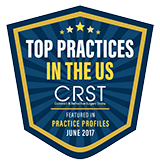What is Nearsightedness?
Nearsightedness, also known as myopia, occurs when the eyeball is slightly longer than usual from front to back. This causes light rays to focus at a point in front of the retina, rather than directly on its surface. Individuals with myopia are able to see near objects more clearly than they are able to see objects at a distance, and often require glasses or contact lenses to see afar.
Myopia is often diagnosed at childhood during eye screenings, as it begins to appear in children between the ages of eight and twelve. Nearsightedness often increases with age and stabilizes in adulthood. Common symptoms of nearsightedness include eye strain, headaches, squinting, and fatigue when driving or attempting to play sports.
Can Nearsightedness be Corrected?
Nearsightedness can be corrected with glasses or contact lenses, or refractive surgery such as LASIK.
Why is it Important?
Myopia has been reported in over 25% of all adult Americans. It is important to have regular check-ups with your eye doctor to ensure that you maintain the appropriate prescription strength to help see at your best. Always see an eye professional immediately if you experience sudden changes in our vision.



